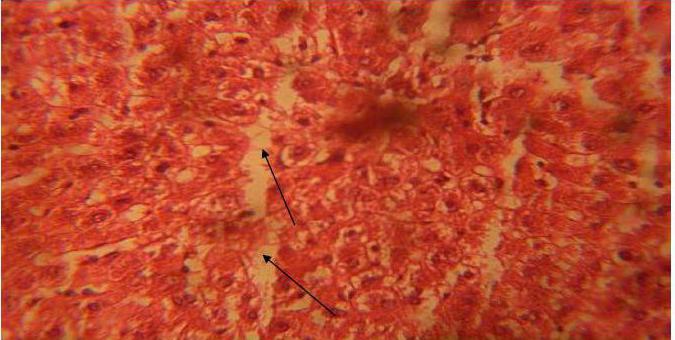Fighting insects is familiar to almost everyone. Especially, this applies to people who have their own gardens or cottages. In addition, some were faced with the spread of insects in the apartment. Therefore, a substance such as dichlorvos is available in almost every home. It is intended to fight various insects: flies, ants, bugs and cockroaches. Nevertheless, not everyone knows about how dangerous dichlorvos poisoning is for a person. This substance belongs to the group of chemicals - organophosphorus compounds. Such products are considered poisonous not only for insects. Poisoning with these substances is also dangerous for humans and animals. It is not only harmful to get this product inside, but also inhalation of its vapor.
Causes of dichlorvos poisoning
Dichlorvos poisoning became quite common about two decades ago due to the appearance of a large number of cockroaches and bedbugs. Currently, this substance is not used so often. Nevertheless, many still use it. In some regions, this product was withdrawn from production and sale, as it has a toxic effect and is dangerous. The following reasons are distinguished for which dichlorvos enters the body of humans and animals:
- Lack of airing of the room. You should be aware that after applying household chemicals designed to control insects, it is necessary to open the windows and leave the apartment for a while. In addition, this also applies to pets. They, too, must be let out into the fresh air until the room is ventilated.
- The ingestion of dichlorvos in the digestive tract. In no case should vapors be allowed to enter the oral cavity. If organophosphorus agents enter the stomach cavity, a fatal outcome is possible. Unfortunately, dichlorvos often penetrates the body of animals (dogs, cats). Also, children should not be allowed to see him.
- The introduction of dichlorvos under the skin. This refers to the liquid form of the substance. Dichlorvos poisoning is also very dangerous, as it causes local damage. In addition, the substance can enter the bloodstream. The penetration of organophosphorus agents in this way can be accidental (unknowingly) and deliberate (suicide).
The effect of dichlorvos on the body

In most cases, dichlorvos from bugs is used in everyday life. This insecticidal agent belongs to the 3rd group of danger. That is, poisoning a person is unlikely. Nevertheless, it is possible with improper use of dichlorvos. In the body of insects, this substance acts on the nervous system, causing paralysis. Death from exposure to organophosphorus substances in bugs and cockroaches occurs several hours after inhalation of the vapor. For people and pets, dichlorvos is not so dangerous. Nevertheless, excessive accumulation of its vapor in the body is possible. In this case, inflammation and swelling of the mucous membrane of the upper respiratory tract occurs. Also poisoning with dichlorvos vapor is dangerous for people suffering from allergic reactions. In this case, the substance quickly enters the surface of the bronchi, causing inflammation. In addition, the danger is the contact of dichlorvos with the mucous membrane of the eyes. This also causes tissue damage and an inflammatory reaction.

Dichlorvos poisoning: symptoms of intoxication
The severity of the symptoms of poisoning with organophosphorus compounds depends on how long a person has breathed vapor of the substance, as well as on the characteristics of the body. In people with a tendency to allergies, the first sign of getting dichlorvos in the bronchi is shortness of breath, an asthma attack. With the introduction of liquid organophosphorus substances into the body, local edema occurs, pain and areas of damage - necrosis of the skin, underlying tissues. So, how is dichlorvos poisoning manifested? Symptoms with prolonged stay in the room are as follows:
- Dizziness, worsening condition, weakness.
- Redness of the skin, itching.
- Increase in body temperature to 39 degrees.
- Headache.
- The appearance of cough and runny nose.
If pairs of dichlorvos have fallen on the mucous membrane of the eyes, signs of conjunctivitis are observed. In this case, a person complains of itching, lacrimation. The inner surface of the eyelids is swollen and hyperemic. Even with an insignificant penetration of the organophosphorus substance into the digestive system (when aerosol is sprayed), symptoms such as nausea and vomiting, pain in the upper abdomen arise.
What can be the complications of poisoning?
In most cases, the vapor of organophosphorus compounds on the skin and respiratory tract is not too dangerous. Usually symptoms disappear within 1-3 days. Despite this, in some cases, severe consequences of dichlorvos poisoning are observed. They develop if a person has an individual intolerance to this substance, with prolonged contact with vapors or with the ingress of poison inside. In these cases, there is a pronounced intoxication of the body. Severe poisoning is characterized by symptoms such as repeated vomiting, increased heart rate and blood pressure, paroxysmal cough. The most dangerous signs are the appearance of a convulsive syndrome, a spasm of smooth muscles of the internal organs. The consequences of this condition can be the collapse and development of coma.
Diagnosis of dichlorvos poisoning
To find out: what exactly caused the poisoning is not always possible. Especially if the patient is in serious condition or is a child. Diagnosis is based on the interrogation of relatives. It should be noted: is there dichlorvos nearby from bugs. Usually, it has a characteristic odor, but in some cases the substance does not smell or manages to disappear by the arrival of doctors. It is important to pay attention to the characteristic symptoms: nausea, vomiting, flushing of the skin and fever.
What to do with dichlorvos poisoning: first aid
When inhaling vapors of dichlorvos, a person must be taken to fresh air. The room should open windows and doors for several hours. Hyperemic skin areas should be washed with running water. It is advisable for the patient to provide bed rest. The mucous membranes of the eyes, mouth and nasal cavity should be washed with clean cold water. If the patient has signs of intoxication, it is necessary to induce vomiting, drink as much fluid as possible.
Medication for dichlorvos poisoning
In some cases, if a person has received dichlorvos poisoning, drug therapy is necessary. In order to remove harmful toxins, activated carbon is recommended. When dichlorvos enters the mucous membrane of the eyes and conjunctivitis, drops of “Albucid” are required. For the prevention of an allergic reaction, the drug "Suprastin", "Tavegil" is used. In severe cases, hospitalization, an injection of saline solutions, anticonvulsants are required.